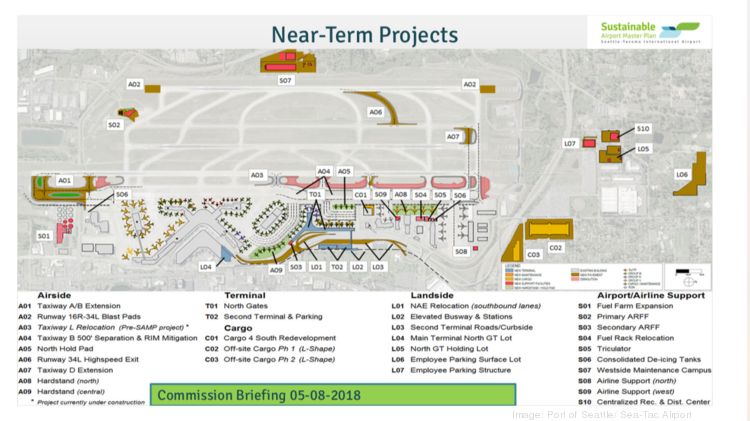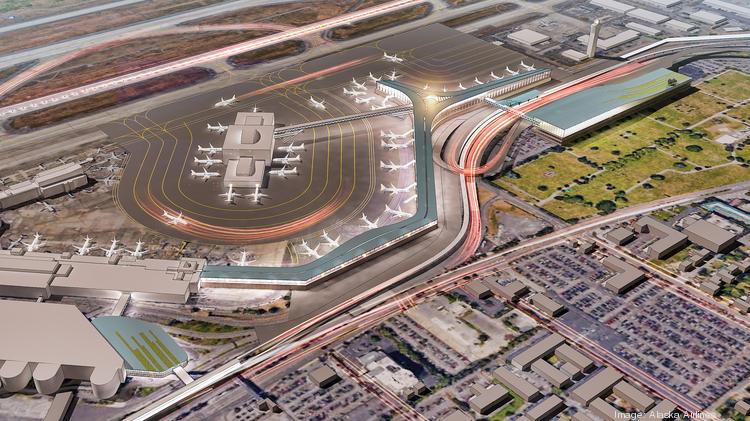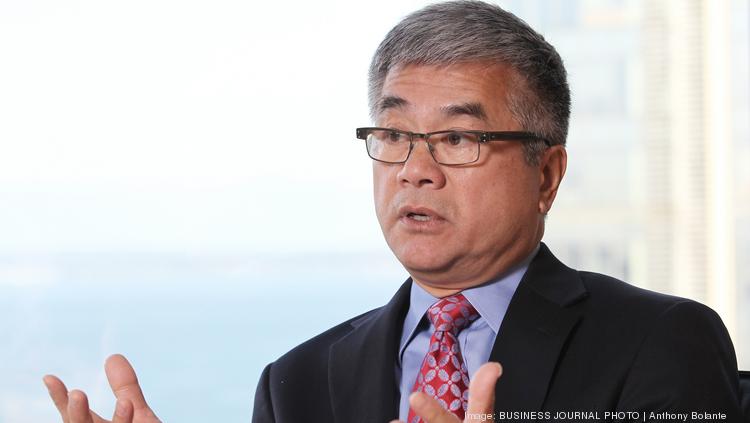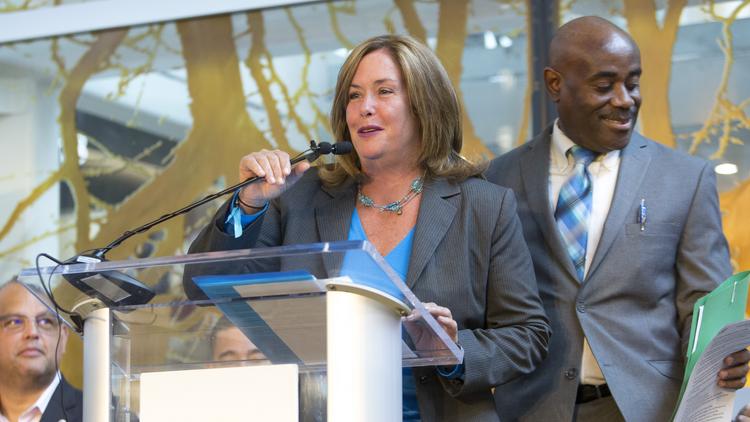Sea-Tac Airport — the eighth busiest airport in the U.S. — needs to expand, but stakeholders are divided on the best way to do that
Passenger traffic at Seattle-Tacoma International Airport is now growing so fast that officials are planning the next wave of its expansion.
Sea-Tac Airport this week said a record 51.8 million passengers coursed through its terminals in 2019, and it expects traffic to hit 56 million by 2027.
To prepare for that growth, the Port of Seattle has been working on expansion plans, drawing up a list of 30 near-term projects to improve airport operations and passengers’ experiences as part of its Sustainable Airport Master Plan (SAMP), its blueprint for future expansion.
The centerpiece of the estimated $2.3 billion plan, which was developed over the past six years, is a 19-gate terminal and passenger processing facility at the airport’s north end, together with an elevated busway to move people between the new and existing terminals and car rental facility.
Getting expansion just right is crucial to the region’s growth and economy. Sea-Tac supports family-wage jobs — 87,000 at the airport alone — and sustains commerce by the Puget Sound region’s major companies like Amazon, Microsoft, Boeing and Expedia, but also its thriving tourism economies.
And Sea-Tac’s SAMP expansion plans have already faced a setback. The environmental review process has been delayed until 2021. Each one of the 30 near-term expansion plan projects must be approved under the environmental process and then by the port commissioners before proceeding.
Port of Seattle and Sea-Tac Airport’s Sustainable Airport Master Plan includes 30 near-term projects as highlighted on this map.
Airlines divided
The proposed plan has divided Sea-Tac’s two biggest airline tenants — Alaska Airlines and Delta Air Lines — even before it’s approved by the Port of Seattle, the regional public agency that owns and operates the airport.
Atlanta-based Delta, the airport’s second largest tenant, stands firmly behind the near-term expansion plans.
“The region’s explosive growth is stressing the current infrastructure at Sea-Tac and impacting the customer experience,” Delta spokeswoman Liz Savadelis said. “Delta supports the port’s efforts to address the airport’s growing pains in a way that enhances the customer experience while continuing to support the region’s expanding air travel needs from both business travel and tourism.”
Thousands of Delta passengers are bused to airplanes and walk up stairs into the cabin as part of so-called “hard stand” operations, which are used because there are not enough gates.
Sea-Tac’s largest tenant, Alaska Airlines, believes the plan to build a stand-alone north terminal has “critical shortcomings.” Alaska contends the airport’s plan for a 19-gate terminal would frustrate travelers and make Sea-Tac one of the most congested hubs in the United States.
“This isolated terminal would require passengers moving between terminals to use a bus or automated people mover to reach the other terminal, as well as go through separate security screening in each terminal, severely challenging flight connections and passenger convenience,” Jones said in a letter to Port Executive Director Stephen Metruck and Sea-Tac Airport Managing Director Lance Lyttle.
Alaska has developed its own counterproposal concepts for expansion, sharing them with airport officials.
Citing “critical shortcomings” with Sea-Tac Airport’s current plan for a proposed new standalone North Terminal with 19 jet gates, Alaska Airlines has come up with its own counter proposal (seen here) involving a phased approach that adds 10 gates faster and allows for superior-part plan, Sea-Tac would build the first 10 gates faster, completing them by 2025 and expand D concourse.
Alaska’s suggested second phase would proceed only when warranted by passenger growth and when Federal Aviation Administration officials feel Sea-Tac can handle more airplane takeoffs and landings.
The second phase involves the nine remaining gates, and what would be an elevated walkway between the expanded D concourse and North Satellite, Alaska’s main flight operations area. It would also include room for Sound Transit to build a second Link light-rail stop at Sea-Tac, near the new terminal.
Alaska acknowledges this would cost as much as 15 percent more, but says its connected and phased approach stands a better chance of winning public support.
“We are hoping the port really digests this, sees the merits of it and has open dialogue with us,” Jones said. “We hope to come up with a business deal.”
A plan to suit all
Former Washington Gov. Gary Locke, who led a citizens’ task force on Seattle-Tacoma International Airport expansion, said he’s not opposed to a new stand-alone terminal, but said airport officials must not focus on that while ignoring deficiencies in its existing central and other terminals.
Locke said Sea-Tac users who spoke with the task force all wanted the same things: “Concourses and waiting areas that are light, spacious and comfortable.”
Gary Locke, former Washington Governor and U.S. Ambassador to China, has concerns about the Sea-Tac Airport’s Sustainable Airport Master Plan.
“That new terminal cannot be the end-all,” Locke told the Business Journal. “They said they share my feelings about improvements being needed for the main terminal, the drive up, the TSA lines and narrow concourses, but they’re not addressing most of those issues. The port needs to outline its entire vision for Sea-Tac, what will be done and when, not just the new terminal.”
Port Commissioner Stephanie Bowman acknowledged receiving Alaska’s concerns and counterproposals, but emphasized the public agency must make investments in infrastructure that “meet the needs of the region and all airlines.”
Port of Seattle Commission President Stephanie Bowman speaks in the newly-unveiled North Satellite terminal at Sea-Tac International Airport in SeaTac, Washington on July 11, 2019.
Sea-Tac Airport is an asset of statewide significance and planning for how it can accommodate the growth of the region requires that we address the needs of all stakeholders. Alaska is a great partner, and we are proud to have them as our hometown carrier,” Bowman said, but added any suggestion the new terminal would lack connectivity “is factually incorrect.”
“There are many options for connectivity,” she said, “and the final decision on all projects will be made by the port Commission.”



